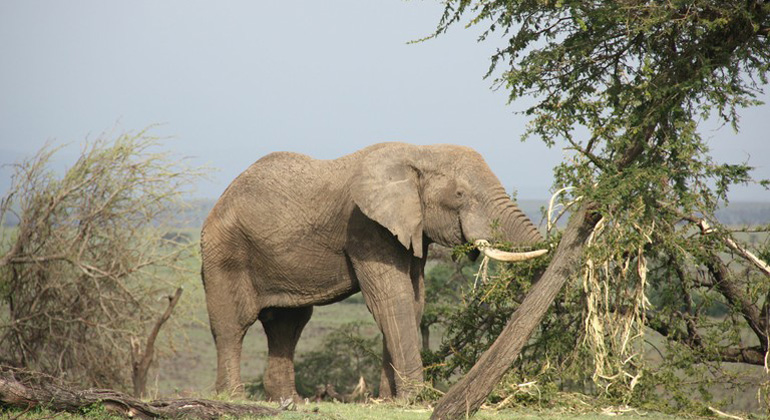Reforestation may not be sufficient for fighting climate change – Researchers at the University of Bonn and World Agroforestry consider this estimate far too high
The original study is based on a simulation by scientists from ETH Zurich, who had investigated how much forest the Earth could theoretically support in areas not currently inhabited or managed by humans. For this, they had looked at nature reserves around the globe, that is, regions that are largely free from human influence.
In each of these areas, the researchers had looked to what extent they are covered by forest. In addition, they considered various site factors, such as annual mean temperature, soil conditions or rainfall. These values were used to feed machine-learning software. After a training phase, the program could then predict for any other areas how much forest cover would be possible. Result: the Earth could carry 4.4 billion hectares of canopy cover, that is, 900 million hectares or just over 25 percent more than today.
Forest in high-latitude permafrost regions?
Scientists at the University of Bonn and World Agroforestry express concerns about this number: “The model is much too coarse,” criticized Prof. Dr. Eike Luedeling from the Institute of Crop Science and Resource Conservation of the University of Bonn.
Among other things, only three soil parameters are included in the analysis; not nearly enough to account for the wide variation in productive potential that characterize the world’s biomes. In addition, soils in many currently deforested areas are eroded or otherwise degraded so that the success of reforestation measures would be highly questionable.
The situation is similar with climatic factors: the software takes into account the annual average but not the lowest and highest temperature of a location.
“As a result, the study sees, for example, significant reforestation potential in the tundra,” said Luedeling’s colleague Dr. Katja Schiffers. “Yet such regions are characterized by permafrost: even in summer, the ground only thaws superficially. Under these conditions, no significant increase in tree cover is possible.”
The scientists also encountered inconsistencies in other aspects of the study. For example, the ETH researchers also considered pasture land, which is currently being used for livestock farming, as potential reforestation areas. The same was true for villages, smaller settlements and even for some megacities, such as Kinshasa, the capital of the Democratic Republic of the Congo.
Around 2.5 billion people live in the areas that the study recommends for reforestation,” said Luedeling. “It is very questionable whether these regions are really suitable.”
The researchers also have doubts about the alleged potential of the newly planted trees to bind additional carbon dioxide.
“The calculation method ignores, for example, that pastures or arable land also contain large amounts of CO2,” said Luedeling. The estimate of well over 200 gigatons of carbon, which reforestation could remove from the atmosphere, seemed considerably too high to him. “I think 20 to 30 gigatons are more realistic.”
In general, he welcomed the idea of renaturing land wherever possible, if only because ecosystems would benefit enormously. However, such measures should not be expected to quickly slow global warming because forests take several decades to mature. Deforested rainforest areas can sometimes not be restored at all: the effects of deforestation on the local climate are too great and the soils are too poor in nutrients.
“However, there is some potential to increase tree cover in agricultural land through agroforestry,” added Keith Shepherd of World Agroforestry.
What remains undisputed is that reforestation removes carbon dioxide from the atmosphere. This, however, is a one-off effect: as soon as the last area is densely forested again, sequestration will slow significantly.
“Reforestation buys us time that we urgently need,” agreed Luedeling. “But it can only be one building block in a comprehensive strategy to avoid catastrophic climate change.”
- Publication: Eike Luedeling, Jan Börner, Wulf Amelung, Katja Schiffers, Keith Shepherd and Todd Rosenstock. 2019. Forest restoration: overlooked constraints. Science. DOI: dx.doi.org/10.1126/science.aay7988








